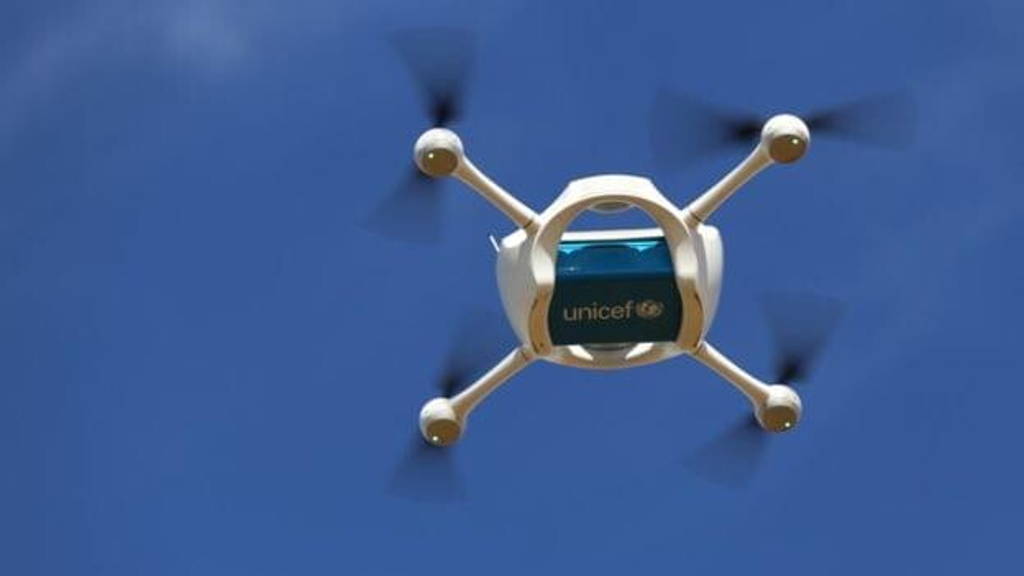Drones are being used for a steadily growing number of tasks. From delivering mail and pizza to shooting up and bombing suspected terrorists. This particular UN project though, would explores whether a small unmanned aerial vehicle, or UAV, could deliver HIV test samples more efficiently than land transport in rural Malawi.
After some initial scare among villagers receiving the test samples, the drone is now accepted and even welcomed every time it lands, says Unicef official Judith Sherman. Africa is often seen as the continent with some of the most entrenched humanitarian crises. Infrastructure such as roads and access to electricity actually seems to be desintegrating here and there.
Perhaps now technology can bring some hope for improvement. Those trying out drones for humanitarian uses in Africa do warn that the technology is no quick fix, but several new drone projects are exploring what can be achieved.
The speed and limited space of drones have focused aid groups and businesses on how to deliver small, sensitive and potentially life-saving cargo. Earlier this year, a partnership was announced between Zipline and the Global Alliance for Vaccines and Immunization.
The highest-profile project, press agency AP writes, begins this week in Rwanda, as the government and U.S. company Zipline launch a drone network to deliver blood supplies and medicines to remote hospitals and clinics. Even in one of Africa's smallest countries, such deliveries can take weeks by land. With drones, it will take hours.
Off Africa's eastern coast in Madagascar, another U.S. company, Vayu, has completed drone flights to deliver blood and stool samples from rural villages with support from the U.S. Agency for International Development.
Aid workers also have reservations. In a survey of workers in 61 countries released last month by the Humanitarian UAV Network and other groups, the majority saw drones as positive, but 22 percent did not. A top concern was that people on the ground would think they were under attack. Yet another issue is costs.
Cost is another issue. The United Nations' test early this year in Malawi with the help of U.S. company Matternet found that using motorcycles was cheaper as they could carry other cargo, said Sherman, Unicefs HIV and AIDS chief there. She still sees drones as "a leapfrog technology that has great potential, some we might not have thought of yet."
After some initial scare among villagers receiving the test samples, the drone is now accepted and even welcomed every time it lands, says Unicef official Judith Sherman. Africa is often seen as the continent with some of the most entrenched humanitarian crises. Infrastructure such as roads and access to electricity actually seems to be desintegrating here and there.
Perhaps now technology can bring some hope for improvement. Those trying out drones for humanitarian uses in Africa do warn that the technology is no quick fix, but several new drone projects are exploring what can be achieved.
Benefits for drones in Africa
Africa has certain benefits for these kinds of projects, said Sid Rupani, South Africa. He studies how drones could be used effectively in supply chains. His U.S.-based employer, Llamasoft, has run a virtual pilot for Zipline in Tanzania. "It's not crowded airspace. Not many urban areas to deal with," Rupani said. Already, drones are being used in parts of the continent as visual aids in mapping and anti-poaching.The speed and limited space of drones have focused aid groups and businesses on how to deliver small, sensitive and potentially life-saving cargo. Earlier this year, a partnership was announced between Zipline and the Global Alliance for Vaccines and Immunization.
The highest-profile project, press agency AP writes, begins this week in Rwanda, as the government and U.S. company Zipline launch a drone network to deliver blood supplies and medicines to remote hospitals and clinics. Even in one of Africa's smallest countries, such deliveries can take weeks by land. With drones, it will take hours.
Off Africa's eastern coast in Madagascar, another U.S. company, Vayu, has completed drone flights to deliver blood and stool samples from rural villages with support from the U.S. Agency for International Development.
Challenges
Drones also face challenges. They are often limited in range or size or need frequent recharging. If they crash, retrieval in remote areas can be difficult. Some governments see the technology as a possible invasion of their sovereignty, or have no regulations in place.Aid workers also have reservations. In a survey of workers in 61 countries released last month by the Humanitarian UAV Network and other groups, the majority saw drones as positive, but 22 percent did not. A top concern was that people on the ground would think they were under attack. Yet another issue is costs.
Cost is another issue. The United Nations' test early this year in Malawi with the help of U.S. company Matternet found that using motorcycles was cheaper as they could carry other cargo, said Sherman, Unicefs HIV and AIDS chief there. She still sees drones as "a leapfrog technology that has great potential, some we might not have thought of yet."






